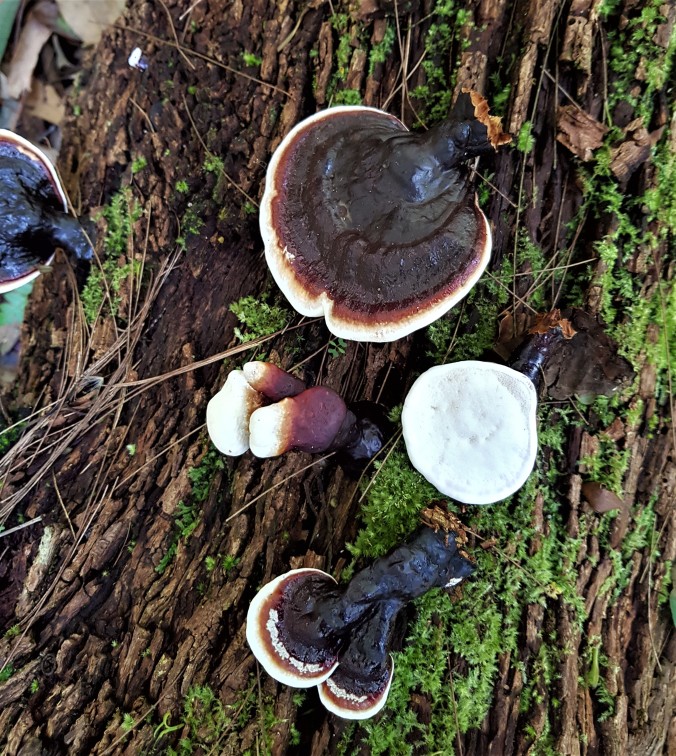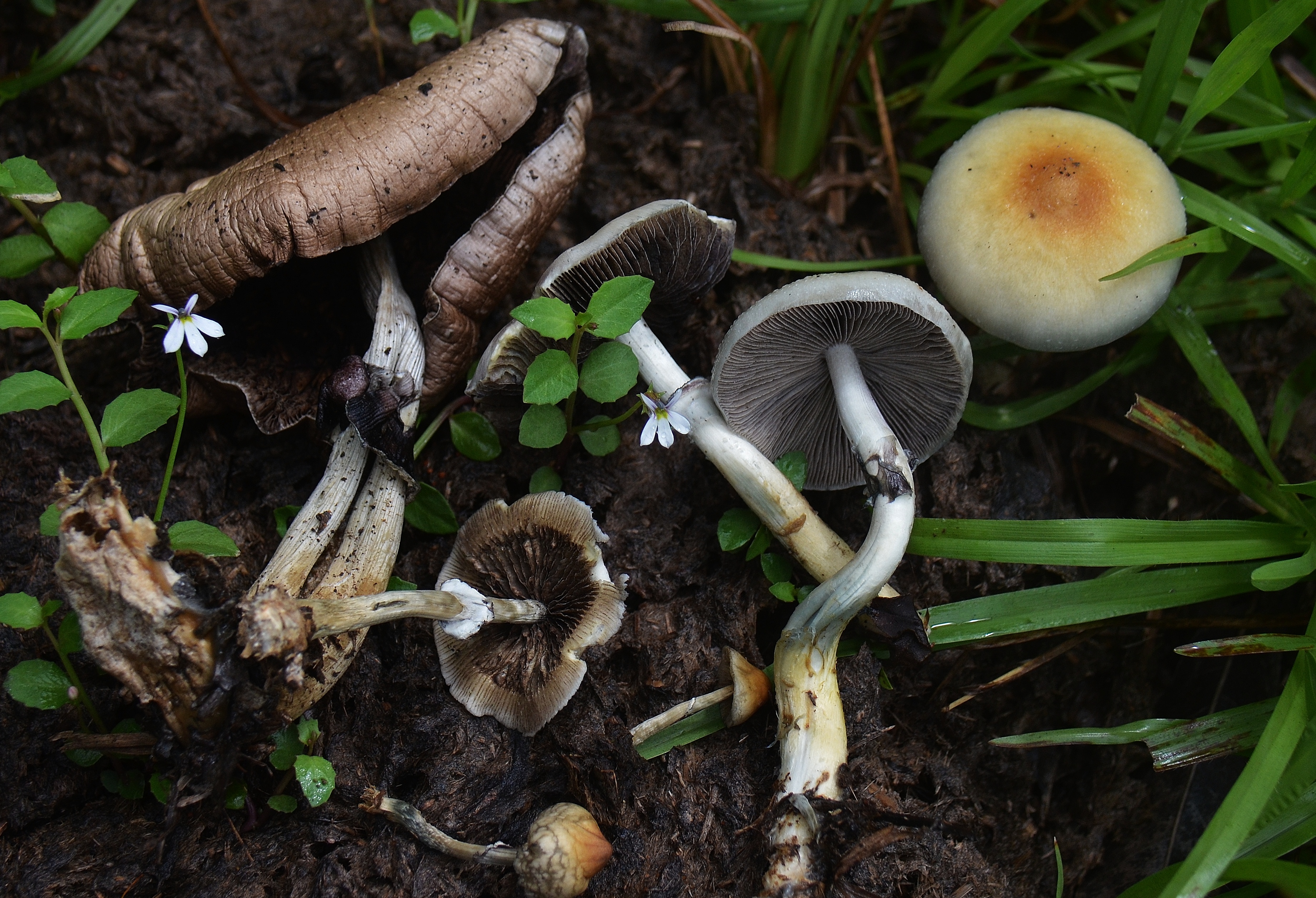
Australian Ganoderma chalceum
Ganoderma chalceum is a fungi that always reminds me of reishi, from the shiny lacquered top to the way it produces strange and varying shapes when fruiting. In NE NSW Australia this is a reasonably common species that seems to have quite specific requirements. I almost always find it growing on dead mountain oak logs, Allocasuarina torulosa (I think). It grows in moist forest or rain forest down by the creek. I thought I would delve into this fungi for my blog to see if I can show that it is indeed a close cousin to the reishi family. Since reishi is not just a single species and has a wide distribution I will start there. Well actually I’m not sure if I can untangle the many species of ganoderma that people use for medicine and refer to as reishi. Ganoderma is a taxonomic mess of over 200 species many have multiple names or have ended up in questionable positions. Reishi or ganoderma lucidum and allies comprise a number of different species in the northern hemisphere, over ten different species. One in particular is worth noting here, the black stalked g. japonicum/sinense.

Australian Ganoderma chalceum
Ganoderma chalceum is better known as g. cupreum, an older name for (probably) the same species group. This paper suggests that g. cupreum is closely related to g. sinense but this link does not really prove that cupreum has any of the same medicinal properties as the well studied sinense. This paper examines Australian, Asian and African cupreum and its worth noting that at least one of the Australian samples was found on Allocasuarina. This also suggest that cupreum is a group rather then a single pantropic species. A close Australian relative to chalceum, Ganoderma steyaertanum is being sold as “Australian reishi” and touted as being a medicinal mushroom with the same properties as g. lucidum. I hope this is based on science and not assumption, my attempts to find out have so far been unsuccessful. However g. steyaertanum does seem to be genetically close to g. lucidum from Asia. G. chalceum and g. steyaertanum are difficult to tell apart the latter being sometimes significantly larger. Its also worth noting that much of the literature on these two species is to do with them being pathogens of some tree and palm species. This key from QMS is kinda helpful and shows four “reishi like” ganoderma in SE QLD.

Australian Ganoderma chalceum
Well, after several hours of reading and searching I have not really got an answer. Its certainly possible that these Australian ganoderma have some or all of the properties of reishi but it seems to me that they would need to be studied more closely to really determine the truth. G. lucidium and allies have a huge number of potentially active compounds, over 100 polysaccharides and 119 triterpenoids along with many other unique compounds. If your interested in learning more about this its hard to top Paul Stamets book Mycelium Running. Its likely that consuming small quantities of these Australian species would be ok but even true reishi is not without possible side effects. Without some better information regarding the chemical makeup of these Aussie reishi’s I would be hesitant to take their extracts long term. This species is an open book and I hope to add more to this post in the future. These species would make a great topic for a PHD student or someone with the skills and equipment to properly examine them. If you have anything to add to this post I would be more than happy to hear from you in the comments or via email.





















